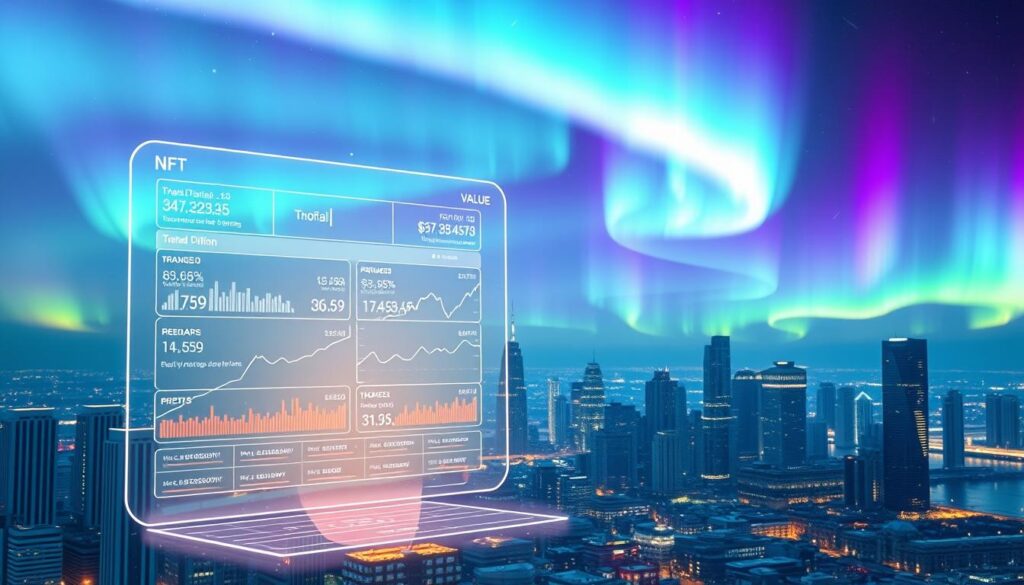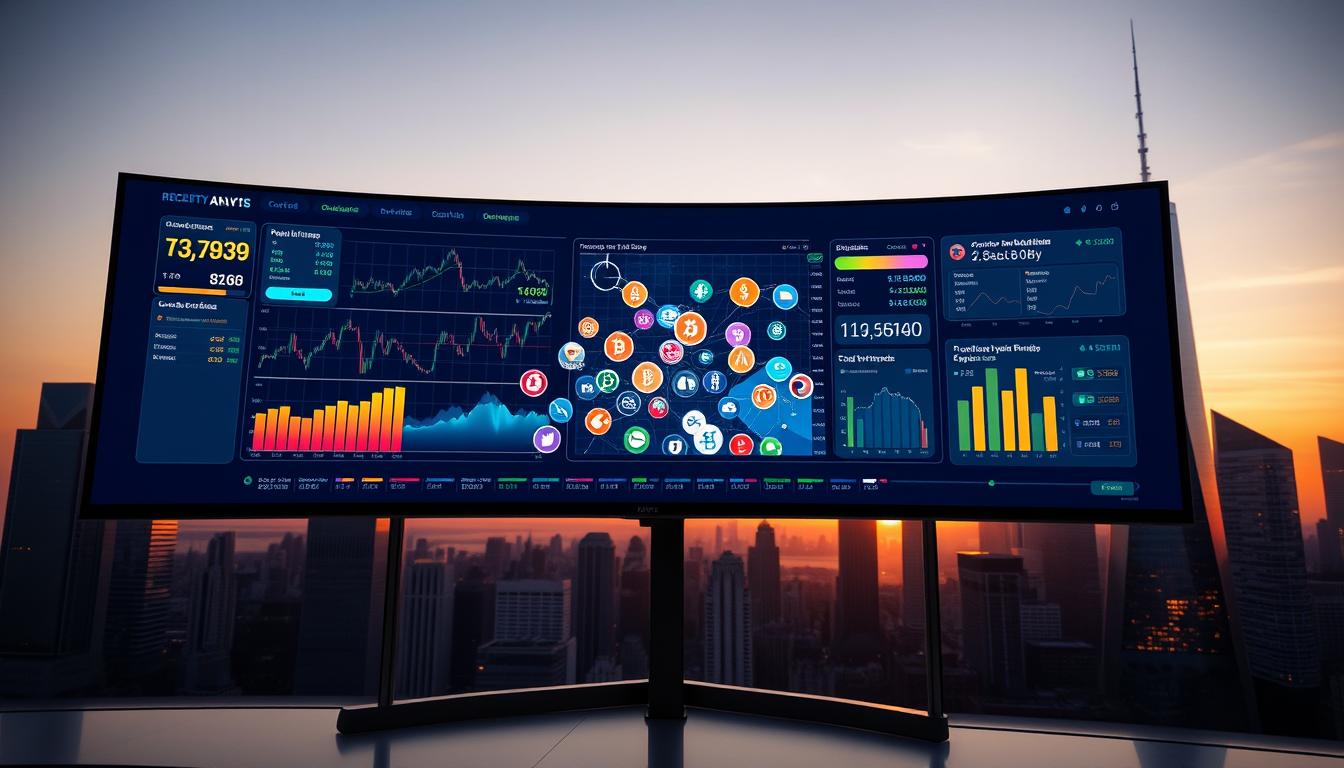Now Reading: AI Crypto Coins Market Cap Comparison Guide
- 01
AI Crypto Coins Market Cap Comparison Guide
AI Crypto Coins Market Cap Comparison Guide

Quick orientation: this guide lays out a clear, product-style roundup of prominent projects, their capitalization tiers, liquidity, and recent performance. Read on to get at-a-glance figures and practical context for leaders like TAO, RNDR, and FET alongside mid-caps such as GRT, TRAC, KAITO, and AIOZ.
What you’ll find: concise data on prices, market values, and drawdowns from all-time highs. We frame each entry by role — marketplaces for models and compute, GPU-driven rendering platforms for creators, and assistant stacks that streamline decisions and transactions.
Why this helps U.S. readers: the structure highlights the practical metrics analysts check first: capitalization, short-term performance, trading activity, and order flow. That makes it easier to compare options fast and then dive deeper into fundamentals, protocol design, and network effects.
Key Takeaways
- Leaders like TAO, RNDR, and FET show high capitalization but large drawdowns from ATHs.
- Mid-cap projects provide niche infrastructure and indexing value across the sector.
- Focus on liquidity, recent performance, and protocol role when ranking assets.
- Use a repeatable checklist to interpret breadth and rotation of new listings.
- Later sections explain where each platform fits and the problems it solves.
Why market cap matters now for AI cryptocurrencies in the United States
Min read: 1 min. For U.S. investors, a project’s market value and recent 24h volume help quickly sort risk and trading friction.
Concrete examples: TAO sits near $2,950,951,893 (-1.48% 24h) with $75,585,710 in 24h volume. RNDR shows $1,731,168,361 (-2.42% 24h) and $32,063,658 in volume. FET and GRT round out leaders with $1.35B and $842M respectively, each posting modest 24h change.
Use capitalization as a quick proxy for maturity and liquidity. Larger names usually have deeper order books and tighter spreads. Smaller projects may move faster on catalysts but carry execution risk.
- Position sizing: cap guides how much dollar exposure to assign.
- Execution: volume and 24h change show if moves have real backing.
- Context: compare current levels to peaks to judge drawdown and stabilization.
Layer these metrics with access and tax rules in the United States to decide if a token belongs on your watchlist, in a small exploratory allocation, or as a longer-term holding.
How we built this AI crypto coins market cap comparison at present
Min read: 1 min.
We built this roundup by merging live ticker tables with short editorial snapshots to keep numbers and context aligned. The live view lists price per token and 24h volume for leaders like TAO ($295.999, $75,585,710 24h), RNDR ($3.33826, $32,063,658 24h), FET ($0.56793, $49,730,695 24h), GRT ($0.08008, $25,285,007 24h), and TRAC ($0.31124, $1,689,925 24h).
Data sources used: live sector tables and recent editorial snapshots
Live tables supply current capitalization, price, 24h volume, and drawdown from ATH. This makes apples-to-apples checks across networks and protocols possible.
Editorial snapshots add product clarity. For example, Bittensor is a decentralized model and compute marketplace, while Render operates distributed GPU rendering on Ethereum. These notes explain whether a token supports a platform, protocol, or indexing layer.
What market cap, price, and 24h volume actually tell you
Market value gives a quick view of size but must be read with circulating supply to judge volatility. Price alone is misleading; capitalization equals price multiplied by supply.
- 24h volume shows current turnover and helps estimate likely spreads and slippage.
- ATH and % off ATH reveal past demand and current sentiment.
- Consistency matters: we evaluate the same fields for each token to reduce bias.
Quick primer: market cap vs. price, 24h change, and trading volume
Min read: 1 min.
A project’s total value and its trading price tell different parts of the same story. Market cap equals the circulating supply multiplied by the current price, so it standardizes size across tokens even when per-unit prices vary.
For example, TAO’s $2,950,951,893 valuation reflects both its price and supply. RNDR shows a similar point: a large cap can exist with a lower per-unit price. FET still sits far below its $3.47064 ATH despite a billion-plus valuation, illustrating why % off ATH matters.
- Cap helps size exposure and gauge likely liquidity.
- Price shows what the marginal buyer pays today; it is not a fundamentals read alone.
- 24h change is a short snapshot—confirm with 7D and 30D windows to avoid false moves.
- Volume reveals how easily you can execute an order; leaders post tens of millions, mid-caps can be low single millions like TRAC at $1,689,925.
Combine cap, 24h change, and volume to separate durable trends from low-liquidity spikes. This approach makes it faster to rank coins for follow-up research.
Today’s leaders by market cap: TAO, RENDER, and the Superintelligence Alliance
Min read: 1 min. Today’s top names combine deep liquidity with clear protocol roles that guide investor focus. Below we snapshot three leaders to show what the numbers mean alongside product roles.
Bittensor (TAO): decentralized model marketplace and compute network
Bittensor acts as a decentralized marketplace for models, compute, and digital commodities. TAO powers resource contribution and network activities.
Render (RNDR): distributed GPU rendering on Ethereum for high-bandwidth dApps
Render coordinates GPU owners and creators for large-scale rendering tasks. Its Ethereum alignment supports composability for developer tooling.
Artificial Superintelligence Alliance (FET): assistants for decisions and transactions
FET focuses on assistant-driven workflows that aid decisions and financial transactions. This use case reaches beyond developer tooling to end users.

| Token | Price | Market | 24h Volume |
|---|---|---|---|
| TAO | $295.999 | $2,950,951,893 | $75,585,710 |
| RNDR | $3.33826 | $1,731,168,361 | $32,063,658 |
| FET | $0.56793 | $1,347,620,185 | $49,730,695 |
- Liquidity: these leaders show deeper order books than mid-caps, easing larger entries and exits.
- Distance from ATH: all three sit well below prior highs, signaling ongoing repricing.
- Product role matters: price-per-token is shown with market value to avoid misreading unit price alone.
Established contenders showing dips and resilience
Min read: 1 min.
Even after steep corrections, certain projects keep delivering protocol services that matter to builders. This tier shows how utility and developer traction can support recovery even when prices fall.
The Graph (GRT): indexing protocol as web3’s search layer
GRT sits at $0.08008 with an $841,909,928 cap and -2.54% 24H. Its ATH was $2.65929, a ~97% drawdown, yet indexer participation and query volume persist.
SingularityNET (AGIX): open-sourcing AGI with lower risk assessment
AGIX trades near $0.28 with a $335.7M market value. The project emphasizes open-source research and tooling, which can sustain development through cycles.
- Why it matters: large caps can endure long dips if developer activity and integrations remain steady.
- Risk management: prices here react strongly to roadmap news; tiered entries and patience help.
- Signals to watch: indexer growth for GRT and marketplace traction for AGIX.
For readers in the United States, established names like these belong on watchlists when looking beyond the top leaders. See a roundup of leading tokens for broader context: top tokens in 2025.
Mid-cap movers to watch across the AI sector
Min read: 1 min.
Watch the mid-cap shelf closely: these tokens often show sharper moves and early product wins.

OriginTrail (TRAC) targets verifiable assets with a decentralized knowledge graph. Its use cases span supply chains and compliance, creating a differentiated data layer inside the platform stack.
KAITO posted heavy trading today, pairing a +36.25% 24h change with extraordinary turnover. That surge shows how a mid-cap can lead narrative rotations but also warns to check volume sustainability.
AIOZ Network focuses on media distribution and streaming primitives. This network angle may benefit from rising demand for content delivery and data-heavy services.
| Token | Price | Market | 24h Volume | % off ATH |
|---|---|---|---|---|
| TRAC | $0.31124 | $155,621,521 | $1,689,925 | -38% |
| KAITO | $1.41343 | $341,185,991 | $475,155,538 | — |
| AIOZ | $0.27392 | $330,382,644 | $4,696,125 | -79% |
- Mid-caps show pronounced dip-and-rip behavior; validate moves with sustained volume.
- These platforms can offer upside optionality but carry higher execution risk for U.S. investors.
- Use staged entries and clear invalidation levels when trading these tokens.
AI tokens through the lens of 24h change and liquidity
Min read: 1 min.
A 24h percent change is a heartbeat; use it with 7D and 30D trends to judge if a move will last. Single-day spikes can reflect real demand or just a short burst from a few large trades.
Reading 24h % change vs. 7D and 30D for trend confirmation
Confirm momentum: compare the one-day move to weekly and monthly returns. KAITO’s +36.25% 24h with massive volume shows force, while TAO and RNDR small declines look like normal fluctuation.
Why 24h volume and order books matter for execution
High 24h volume often means tighter spreads and cleaner fills. Low turnover, as with TRAC’s $1,689,925, can make large orders slip or fill partially.
| Token | 24h change | 24h volume | Liquidity note |
|---|---|---|---|
| KAITO | +36.25% | $475,155,538 | Very deep — heavy flows |
| TAO | -1.48% | $75,585,710 | High — good for large orders |
| RNDR | -2.42% | $32,063,658 | Moderate — watch spreads |
| TRAC | — | $1,689,925 | Thin — higher slippage risk |
- Fast pulse: a single-day change needs 7D/30D confirmation to reduce whipsaw.
- Compare volume across peers to rank likely execution quality for U.S. traders.
- Track whether strong 24h moves keep pace over days before increasing position size.
Sector snapshot: breadth of AI crypto from protocols to marketplaces
From infrastructure that supplies GPU cycles to services that index and verify content, the sector is broad and active. This snapshot groups projects by role so readers can see where liquidity and product fit align.

From infrastructure to data and indexing
Infrastructure examples: TAO ($295.999, ~-61% off ATH) and RNDR ($3.33826, ~-75% off ATH) anchor compute and render services with deeper liquidity.
Indexing and data layers
Data/indexing: GRT ($0.08008, -97% off ATH) and TRAC ($0.31124, -38% off ATH) supply queryable data and verifiability for apps and integrations.
Notable newer names and evolving roles
KAITO ($1.41343), AIOZ ($0.27392), IO ($0.53245, -92% off ATH) and ARKM ($0.51505, -87% off ATH) show diverse roles from media delivery to on-chain intelligence.
- % off ATH is a quick risk gauge: deep drawdowns may be value plays or warning signs.
- Compare tokens by function—compute, render, index, intelligence—to diversify across complementary assets.
- Pair capitalization tiers with ATH distance and recent turnover for a concise scorecard when monitoring the sector.
Beyond market cap: fundamentals, networks, and protocol utility
A token’s true utility shows up when networks lower costs, speed workflows, or unlock new on-chain services. That shift separates short-lived narratives from lasting platforms.
Key evaluation points for U.S. readers:
- Problem fit: does the protocol reduce cost or improve performance for model providers or content creators?
- User and developer traction: active providers, indexers, and consumers signal genuine utility.
- Platform effects: integrations and partners lower switching costs and raise stickiness.
In an artificial intelligence context, data quality, contribution incentives, and verifiability shape durable network behavior. Align token design with protocol utility to judge whether value accrues to holders or users.
| Project | Core utility | Signal to watch |
|---|---|---|
| Bittensor | Model and compute marketplace | Provider growth |
| Render | GPU sharing for creators | Job throughput |
| The Graph | Indexing/query layer | Query volume |
Also weigh governance, upgrade cadence, and security records alongside liquidity and distance from ATH to avoid purely momentum-led choices.
Risk, regulation, and cookies: what U.S. investors should know
Min read: 1 min.
Before placing any trade, confirm that the tokens you want are permitted in your state and on your exchange.
Jurisdictional availability and regulatory restrictions
U.S. investors should verify whether specific cryptocurrencies are listed on their chosen platforms. Platforms may block assets for legal or policy reasons.
Regulatory shifts can change on-ramps, staking features, and liquidity. That affects execution and tax reporting.
Cookie preferences and transparency on data usage
Review Cookie Preferences to see how sites collect analytics and personalize content. Clear communication helps you understand what data is shared.

- Confirm listings: availability varies by state and venue.
- Watch rules: policy changes can alter access and product features.
- Know your data: cookie settings and privacy notices explain tracking and communication choices.
- Check legal status: verify blockchain project limits before orders to avoid surprises.
| Area | Why it matters | Action for U.S. investors |
|---|---|---|
| Listings & jurisdiction | Controls whether you can buy or hold an asset | Confirm exchange terms; check state rules |
| Regulatory policy | Affects staking, on-ramps, and liquidity | Monitor notices and regulatory updates |
| Cookies & data | Drives analytics, personalization, and communication | Adjust cookie preferences; read privacy statements |
© 2018 – 2025 Crypto.com. All rights reserved.
Signals to monitor in AI crypto: volume spikes, developer traction, and sector rotation
Watch sudden volume spikes tied to multi-day strength; they often separate noisy pumps from sustained accumulation.
Min read: 1 min. Look for spikes that line up with positive 7D and 30D change rather than lone 24h bursts. KAITO’s recent $475,155,538 surge with a +36.25% move is a clear example of forceful buying. By contrast, TRAC’s $1,689,925 shows thinner turnover and higher slippage risk.
Developer activity and team communication matter. New repositories, integrations, and roadmap updates often come before price follows. Compute power narratives also shift flows into rendering and model marketplaces when throughput demand rises.
- Durable signals: rising volume plus sustained change over 7–30 days.
- Execution cues: higher trading depth on leaders (TAO, FET) eases large fills.
- Rotation: mid-cap climbs into higher tiers can coincide with improved liquidity and cap-tier migration.
| Token | 24h Volume | Signal |
|---|---|---|
| KAITO | $475,155,538 | Strong multi-day lift |
| TAO | $75,585,710 | Deep liquidity |
| TRAC | $1,689,925 | Thin turnover |
Risk control: watch dispersion. When leaders consolidate and select mid-caps expand, there may be timely chances to rebalance exposure.
Putting it all together: making informed choices from this market cap roundup
A practical checklist helps you convert the roundup into repeatable choices.
Start by ranking targets by market cap and distance from ATH, then shortlist a mix of leaders and mid-tier coins that match your risk profile. Validate liquidity with recent volume and spreads so your orders fit the books.
Examine fundamentals: confirm whether a project delivers compute, rendering, indexing, or assistant services tied to the artificial superintelligence alliance. Weigh FET-style assistant plays against infrastructure tokens to diversify exposure.
Use a one-day move to prompt research, then confirm momentum across 7D and 30D windows. Document position sizes and rebalancing rules, and monitor U.S. listings and regulatory updates. Reassess your thesis regularly with the same metrics to keep decisions consistent.














